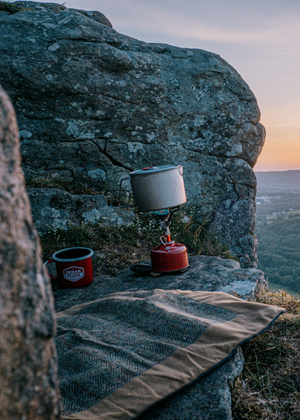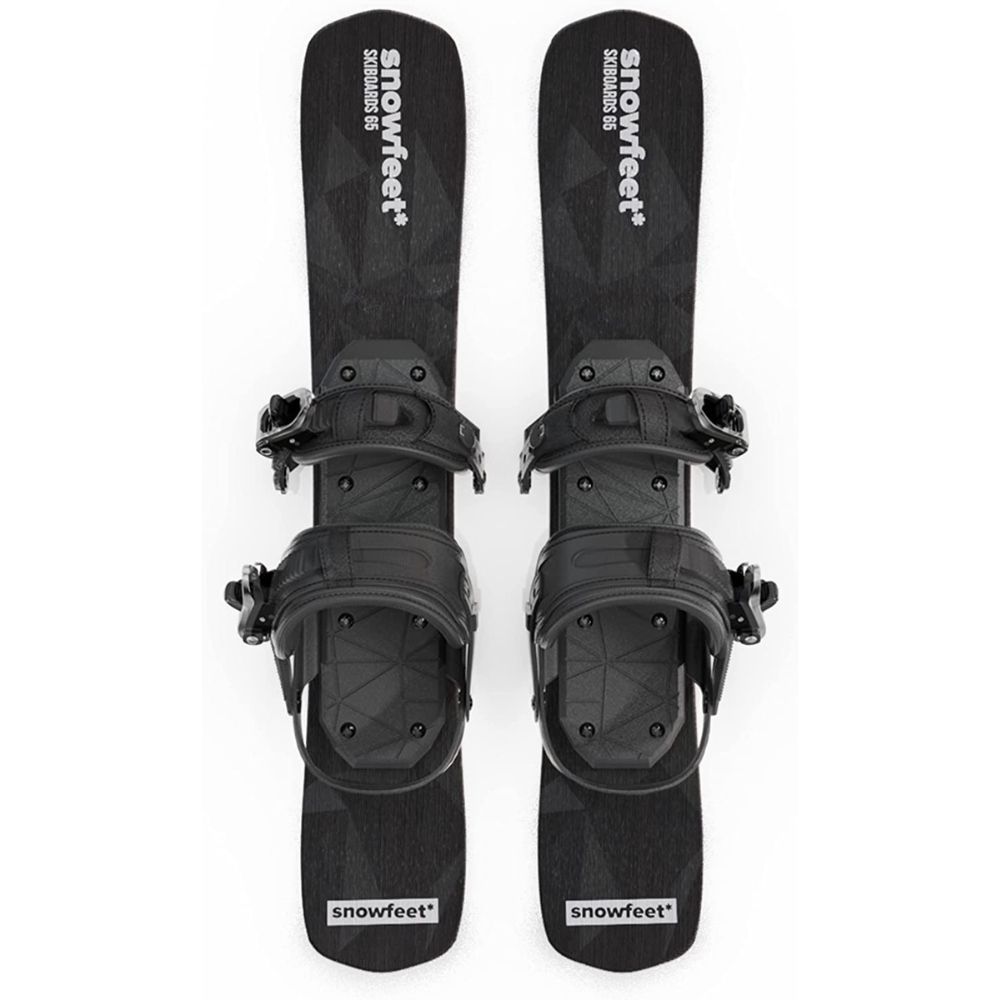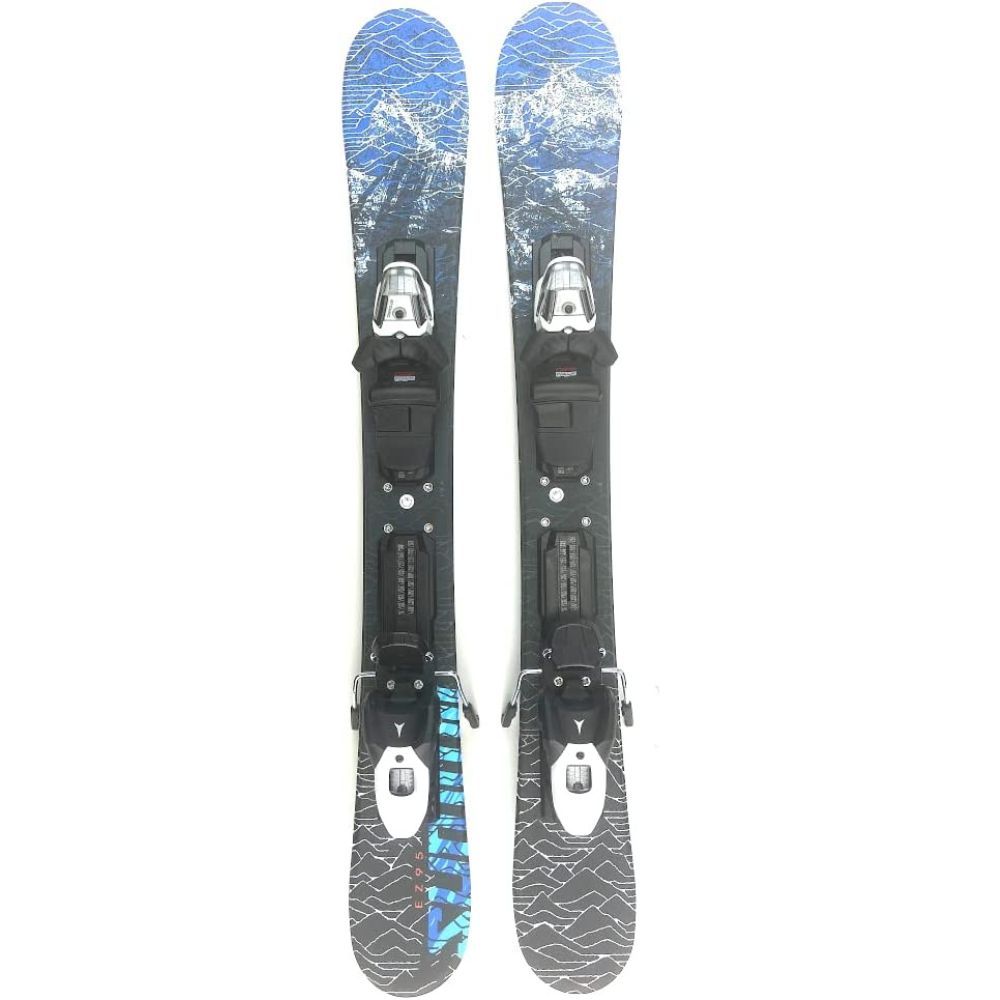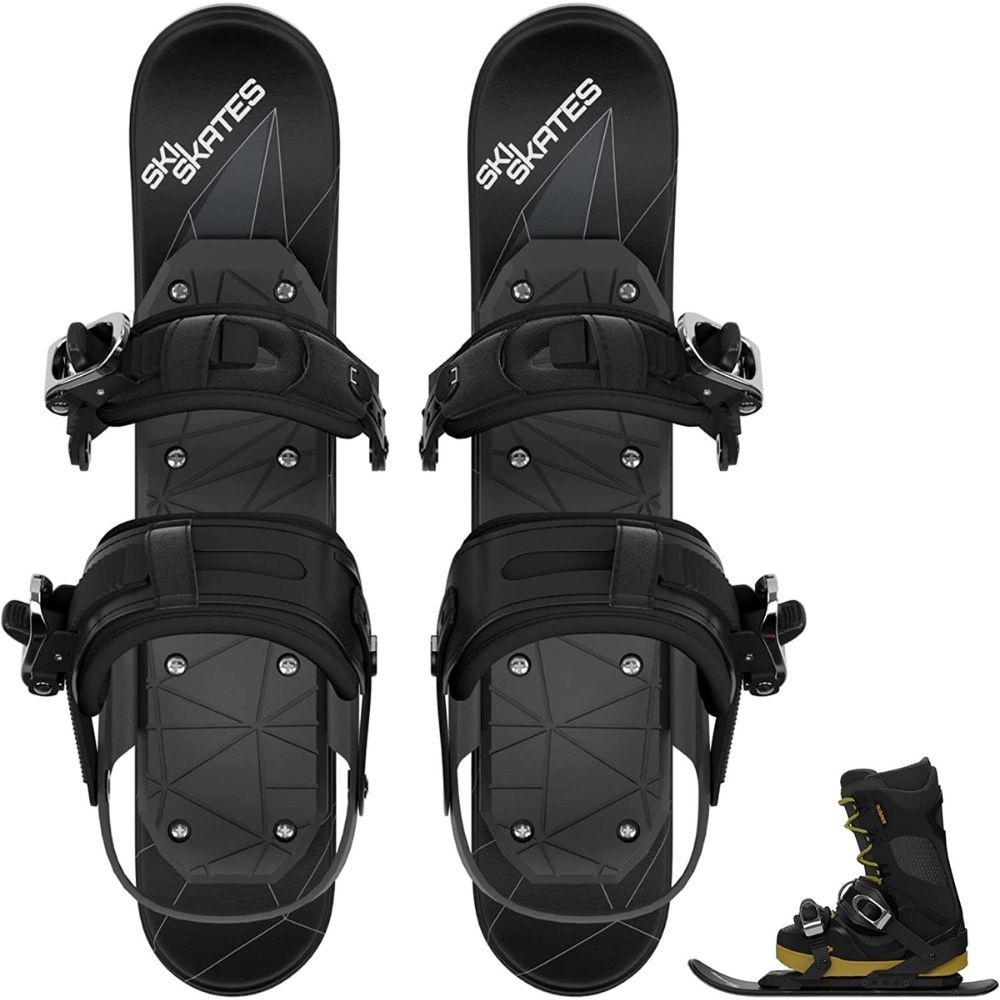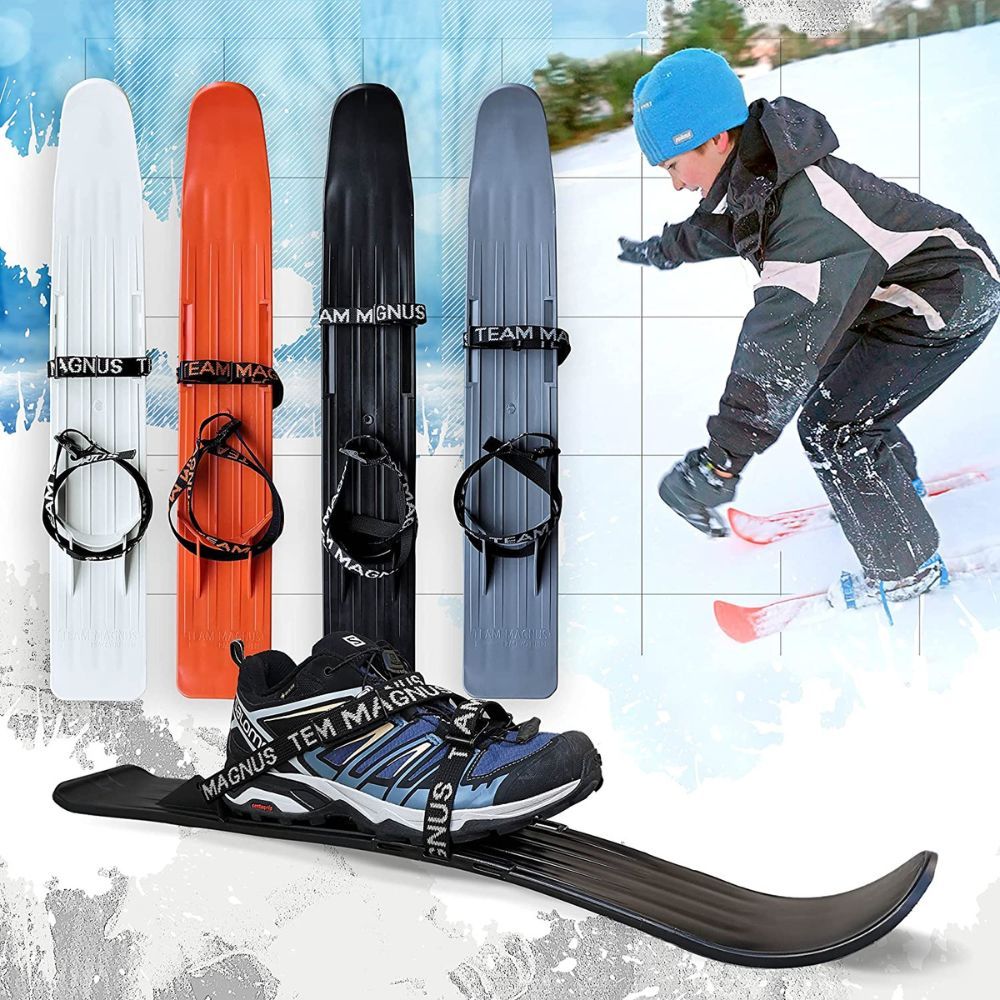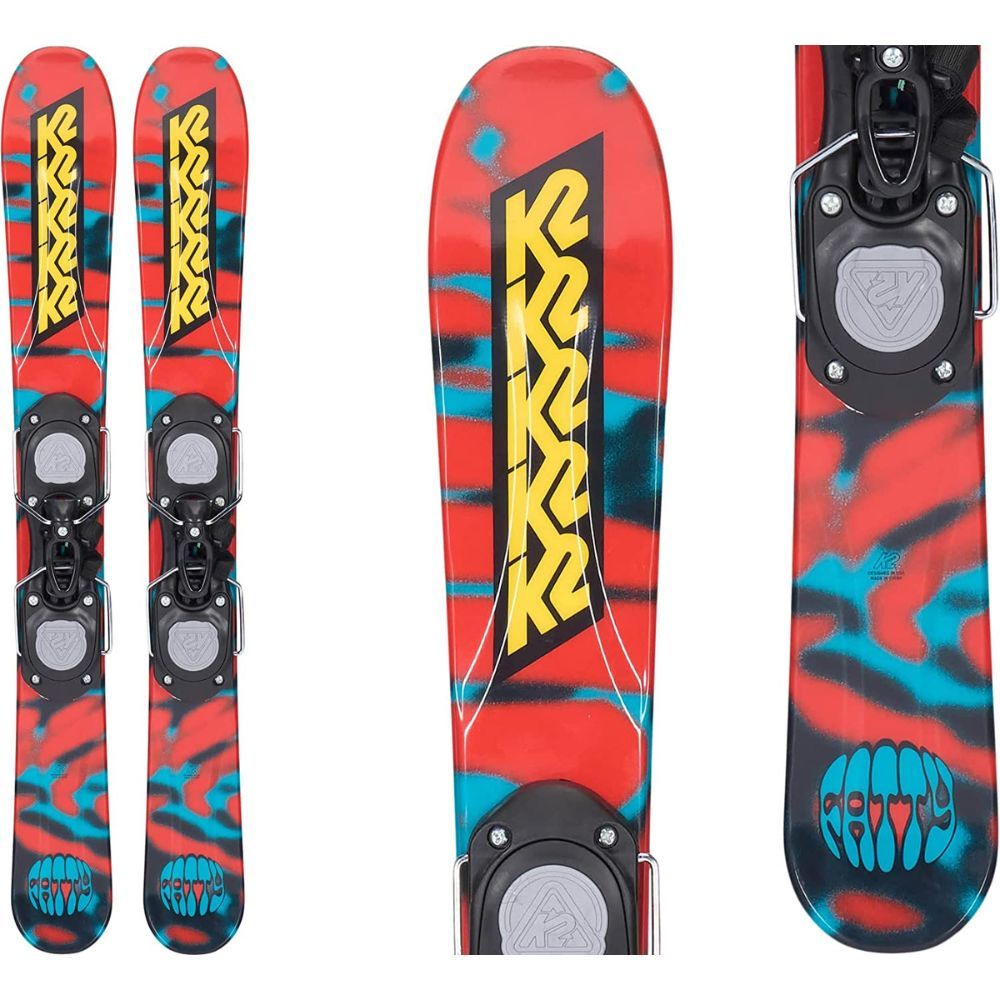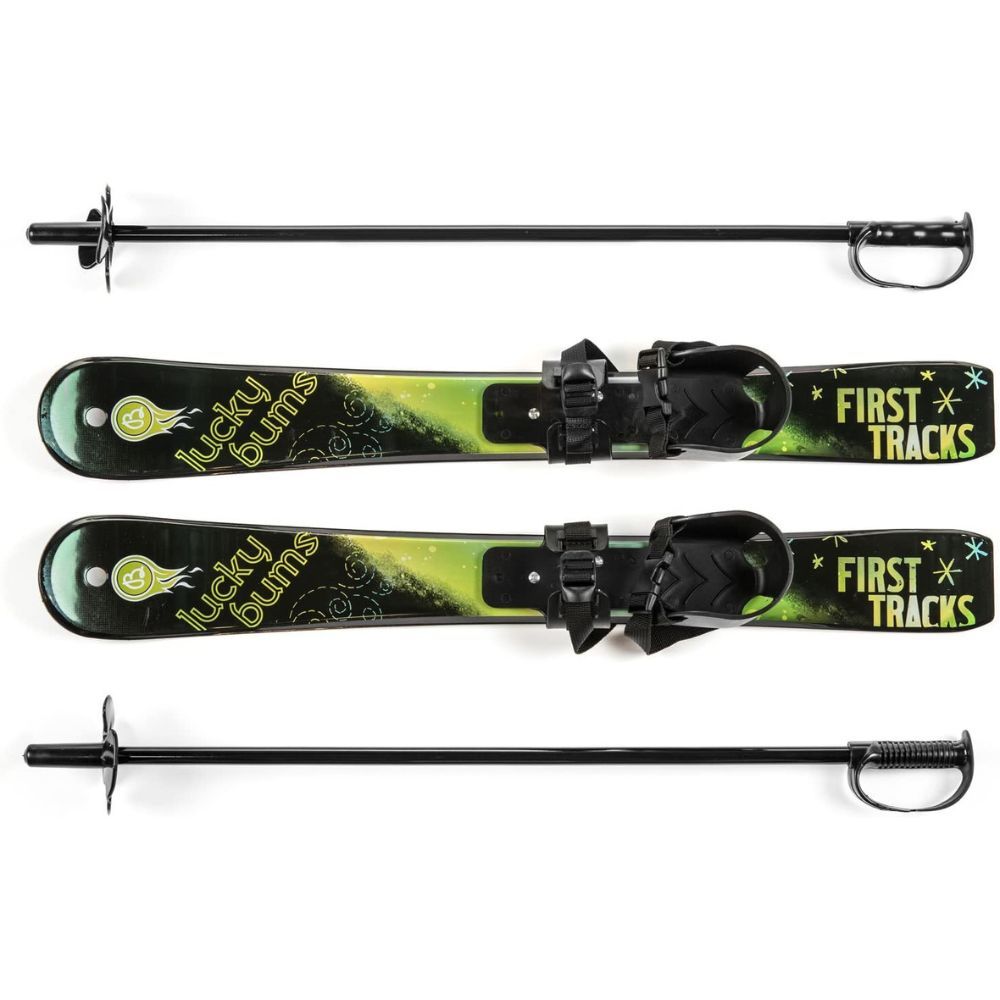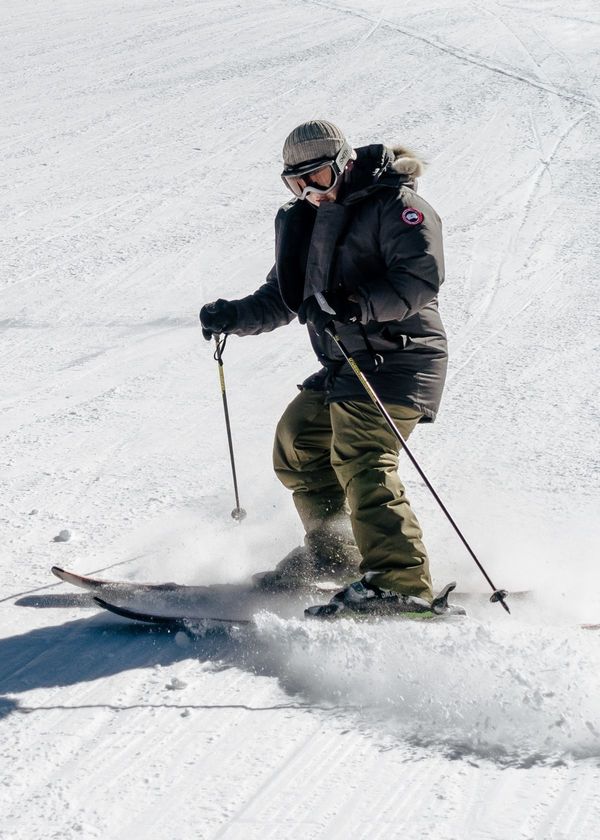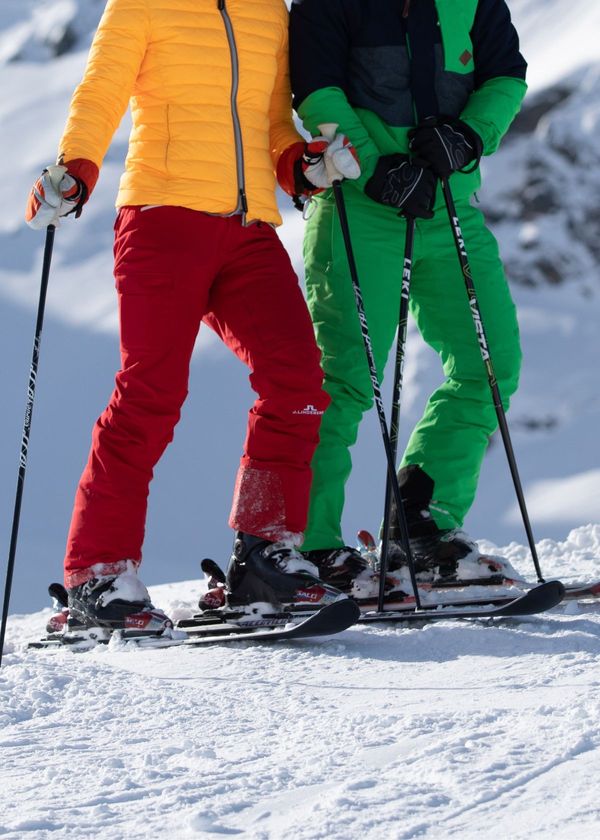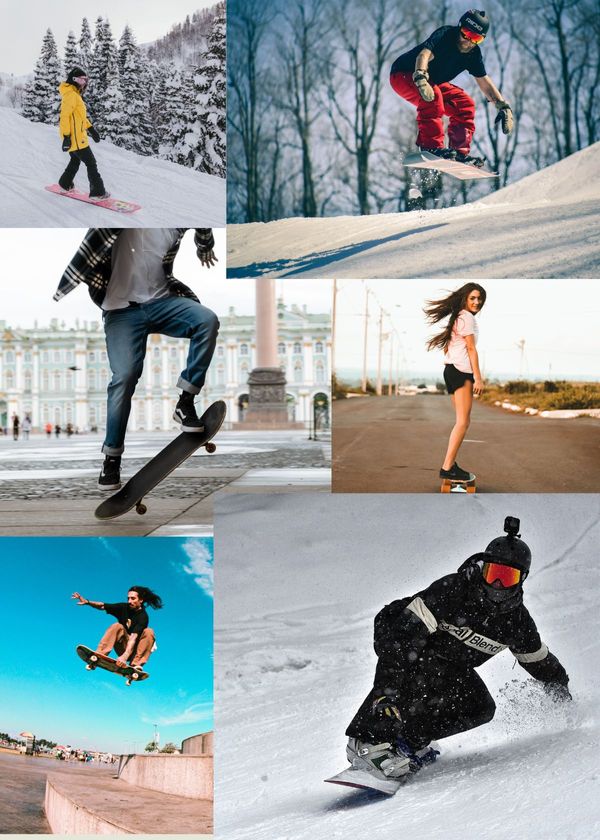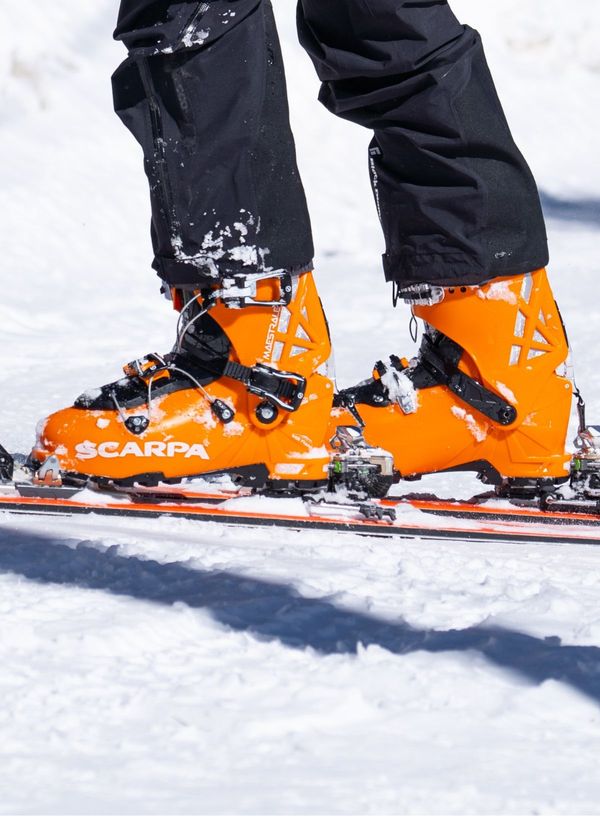Ready for an unforgettable skiing experience?
Look no further than these top ski blades!
Whether you're a seasoned pro or just getting into winter sports, having the right ski blade can make all the difference in unlocking your potential for speed and precision.
From finding stylish designs to choosing quality craftsmanship, we've compiled a list of some of the best ski blades around so you can be sure that whatever you pick will equip you well on your next ride.
So grab your gear and get ready to shred - it's time to find the perfect ski blade for your epic winter adventures!
Here's our guide to choosing the right ski blades so you can get ready for your epic winter adventures in style and safety.
- Know what type of skiing you'll be doing most often. Ski blades are designed differently depending on whether you'll be carving fresh powder or taking on moguls and other terrain park features. Once you have a better idea of what kind of activities you'll primarily be doing, narrow your search by looking at different models that suit those needs.
- When it comes to choosing quality craftsmanship, keep an eye out for high-end materials like carbon composites and ABS plastic construction. Look closely at how well-made the blade components are and take note of any extra features that may come in handy, such as self-cleaning edges or wider metal edges for more control on harder snow conditions. Also, check out how easy it is to adjust bindings and if spare parts are available should anything go wrong down the line.
- Finding stylish designs is also important for any skier wanting to look their best on the mountain! Many companies offer specialized designs featuring cool graphics and custom colors, so don't forget about aesthetics when making your choice. Consider how unique each model looks compared to others and pick one that appeals to your style, whether it’s sleek and modern or something more classic with retro vibes.
- Finally, always test out blades as they all have different flex rates which can give various rides depending on what kind of skiing you're doing and how fast you attack them!
Now that we've gone through everything from picking quality craftsmanship and stylish designs to testing them out, it should be much easier to find a ski blade that fits your style just right – ready for an adventure?
As an Amazon Associate, we earn on qualifying purchases at no cost to you (helps us to keep the lights on!)
Get ready for an unbelievable ride with one of these top ski blades:
The Snowfeet Short Mini Skis give you serious maneuverability with its 65 cm length.
The cap construction & wood core provide superior traction and smooth gliding performance over downhill terrain.
It's also lightweight and easy to carry around so you can take them anywhere.
Plus, tool-free non-release bindings fit ski boots size 38-49 EU / 6-14.5 US with safety leashes for secure attachment and an anti-slippery surface for perfect grip.
These high-quality skis are handmade in Europe with metal edges that can provide ultimate control while skiing on difficult inclines.
The Summit EZ 95 cm Skiboards Snowblades with Atomic M10 Release bindings: the modern, versatile alternative to skiing.
These skiboards combine convenience with performance, making them perfect for any level of rider.
With an item dimension of 40 x 6 x 6 inches, they are easy to carry and store - excellent for when you need a bit of fun activity in the snow.
The Atomic M10 Release bindings help provide extra secure stability and control while riding, making these skiboards super easy to ride and turn - plus, their stops are convenient and effortless!
Skiskates by Snowfeet are short mini ski skates designed to take your snow adventures to the next level.
They are a combination of skis and skates, making them a perfect companion for both adults and children alike.
The adjustable bindings easily fit all ski boots sizes from 36-49 EU / 4.5-14.5 US / (22,5-32,5 MP/Ski boot size). Measuring 44 cm in length, these are the world’s shortest skis that can fit into most backpacks for added portability and convenience.
Their wood core cap construction technology is the key to these boards’ comfortable ride with access to effortless control thanks to their metal edge styling.
Team Magnus skis are the top choice for US Nordic & Ski Jumping Federation when it comes to junior training camps, helping those perfect their technique and develop core balance.
With our skis’ 26 in/65cm length, anyone from children to adults can take their skiing skills to the next level.
The high-quality Swedish straps buckle securely onto any shoe or boot, giving users a great sense of control.
Plus, the top-grade UV-resistant HDPE plastic remains intact even in wide temperature differences and can hold up to 175 pounds!
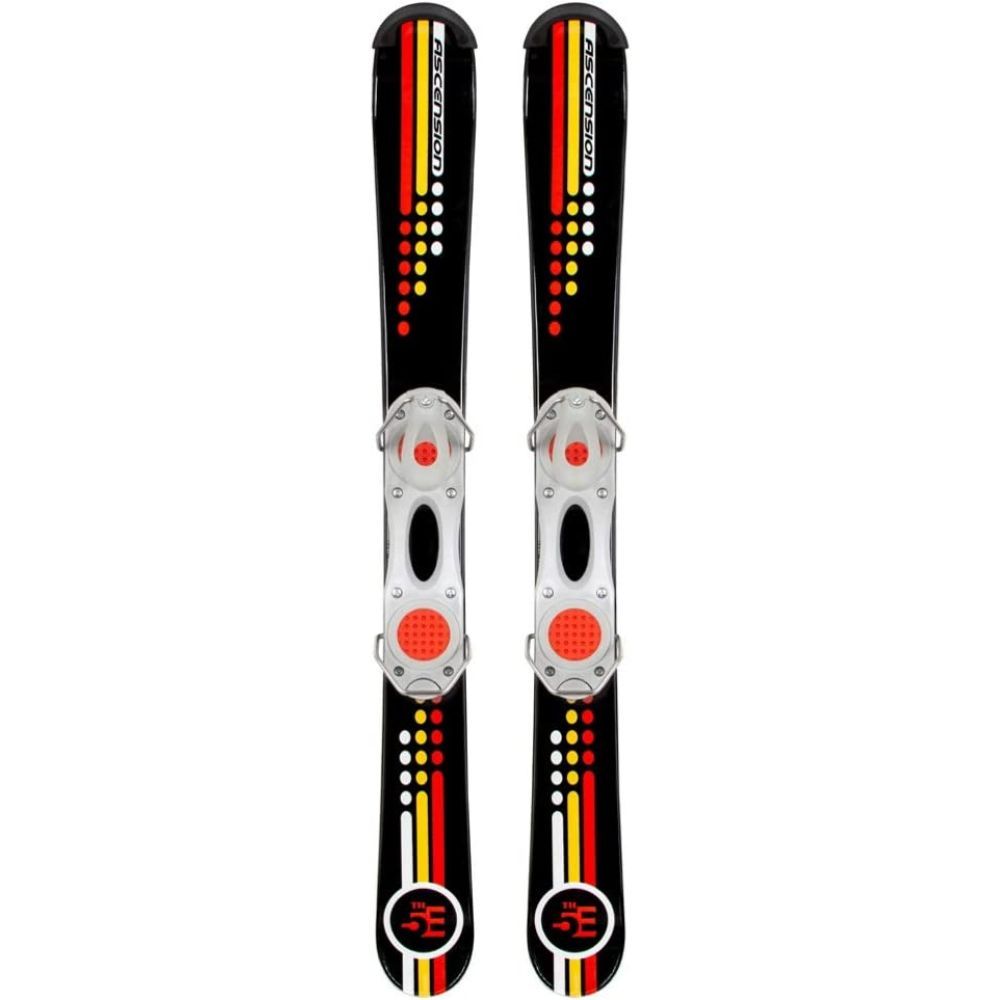
5th Element Ascension Ski Blades, Ski Boards, Snow Blades for Adults with Adjustable bindings
The 5th Element Ascension Ski Blades, Ski Boards, and Snow Blades for Adults are recommended for beginner-level skiers!
The complete package is designed with an adjustable binding that can fit up to a 32.5-sized ski boot, ensuring a comfortable and secure fit.
The non-release bindings come complete with an ankle leash so you never lose your ski in the snow.
With a size of 99 cm and a sleek design of black and red, these ski blades are remarkably stylish and easy to use!
The twin tips are fitted with quality base material and waxless steel edges, these 5th Element Snow Blades provide a smooth ride every time they hit the slopes.
With top-grade components made from lightweight but strong materials built for speed, these adult trick skis will have you on cloud nine in no time!
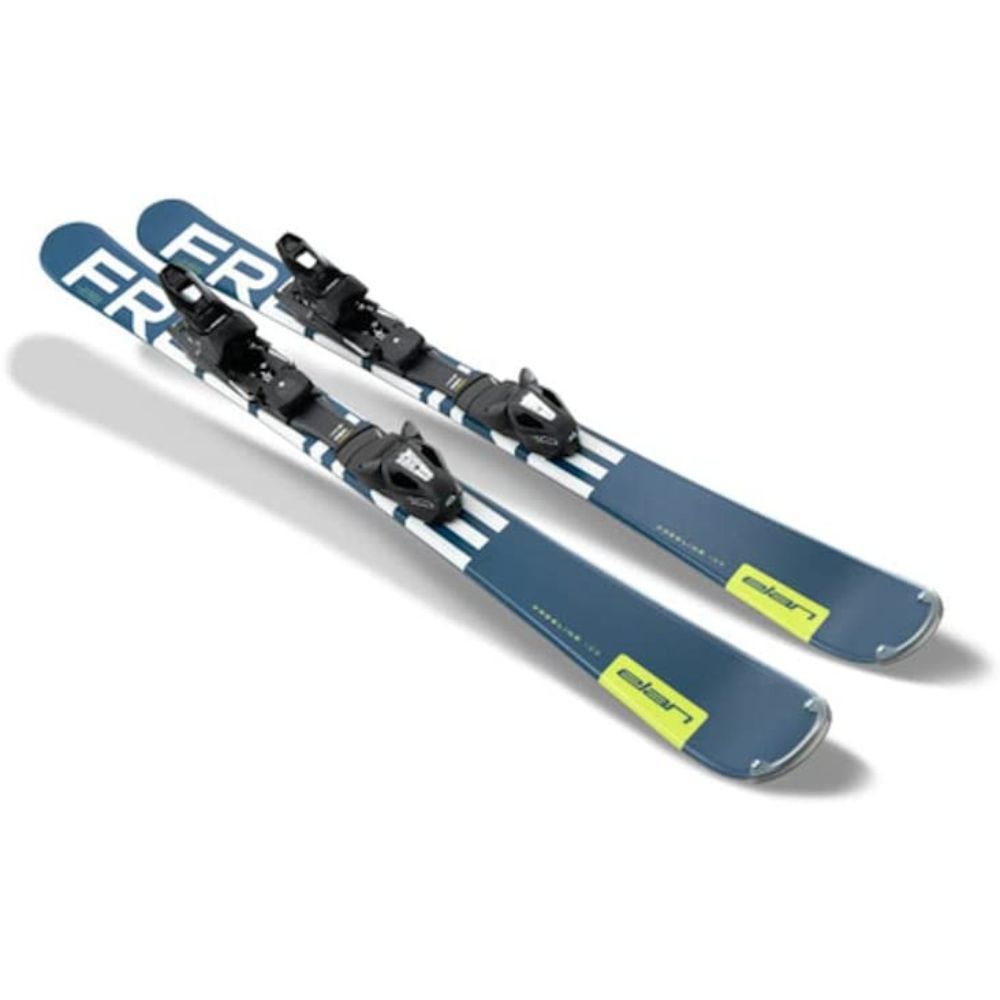
Elan Freeline Shift 99cm Skiboards Adult Short Skis with Elan Ski Bindings 22/23, blue
The Elan Freeline Shift 99cm Skiboards Adult Short Skis with Elan Ski Bindings deliver high-performance short skiing in an all-in-one package!
The sleek, sophisticated blue aluminum skis are specially designed for adults to make their alpine skiing experience more enjoyable. These skis have a parabolic sidecut that is unique and perfect for ease of turning during those steep descents and tight corners.
You don't need to worry about binding installation either - these skis include our adjustable Elan ski bindings right from the factory, perfectly integrated into the deck so you'll be ready to go right away!
The K2 Fatty Mens Skis 88cm, with a high-performance design, has been optimized to excel in nearly any condition and terrain, ensuring that no matter whether you’re at a resort or in the backcountry, your experience will be enhanced tenfold.
The K2 Fatty Mens Skis 88cm provide solidly built stability that ensures reliable precision and ultimate control.
With strong power transmission and exceptional liveliness underfoot, anything is possible when you’re shredding with Fatties.
The Lucky Bums Kids Beginner Snow Skis starter set is designed especially for children ages 4 and under and comes complete with flexible bindings that fit most snow boots or shoes and allow heel lift. They feature plastic skis with no metal edges and round tips, making them the ideal first pair of skis to start learning.
With improved traction offered by scales on the bottom of the ski, your youngster will enjoy more balance while gliding through the snow!
Ski Blades Frequently Asked Questions (FAQs)
Buying ski blades can be confusing. With all of the different brands, materials, sizes, and shapes, how do you know which ones are right for you?
It can be hard to know where to start when shopping for ski blades. Do you go with a popular brand or try something new? What material is best for your needs? And what size should you get?
We've compiled this list of the most frequently asked questions to help you select the right ski blades for you.
Are ski blades still a thing?
Ski blades (also known as ski boards or ski blades) are still very much a thing, and they have come a long way since their introduction in 1999. Ski blades are ideal for skiing off-piste, on ice, and in shallow powder due to their lightweight and small size. They provide the maneuverability that is often missing with longer skis.
When skiing with ski blades, you will experience an entirely new level of control over your turns and speed—there is no need to shift your body weight when using ski blades. You can also use them to make fast tight turns while still maintaining stability thanks to the wider tails of modern ski blades. Skiers who use ski blades notice that they accelerate quickly and also have great edge grip at high speeds on hard-packed snow surfaces—a huge bonus compared to traditional alpine skis!
Skiboarders occupy a unique niche in the world of skiing: shorter than regular alpine skis but longer than snowboards, allowing them access to terrain that neither could reach alone - perfect for backcountry exploration! In addition, they require less physical strength than traditional alpine equipment making it easier for novice riders or people just looking for fun without pushing themselves too hard. Lastly, since there is no need for bindings (which means less setup time) these boards are perfect for those who want quick thrills!
Ski blade technology has advanced substantially over the last two decades from lightweight construction materials such as carbon fiber composites combined with all-mountain camber profiles designed specifically around short lengths - resulting in more nimble models which have greater torsional stiffness and power transfer when riding through powdery conditions. With brands such as Salomon offering various models of ski blades appropriate for all skill levels - from beginner's soft boots up to Free Ride boots - it's obvious why this relatively young sport has become increasingly popular amongst free-riders worldwide!
Are ski blades easier than skis?
Ski blades also referred to as snow blades or ski blades, are a type of ski that offers a unique skiing experience. Compared to traditional skis, they are shorter in length and have much less surface area, making them easier to turn but still providing stability when carving down the mountain. While ski blades may seem easier than traditional skis due to their size and shape, it's important to note they require an increased level of skill from the user compared to normal skis.
When using ski blades you'll want to shift your weight over the edges of your ski blades for greater control and stability during turns. You will also need an understanding of how your body movements can affect acceleration/deceleration on a ski blade depending on where you put pressure on your feet and legs. Ski bladers tend to have better mobility when turning due to having more control over their bodies while turning because they do not rely solely on their arms like one would do while skiing with traditional skis.
Are blades harder than skis?
The answer to this question depends on how you define "harder." Generally speaking, blades are slightly harder than skis when it comes to maneuvering and control. Blades require more precision when turning as the user must employ a lot of balance and finesse, whereas irregularly curved skis allow for easier carving and sliding over ice or snow.
In terms of sheer physical durability, however, blades are much less durable than skis. Because blades are geared toward speed rather than performance or longevity, they don't have the same shock absorbers or cushioning that allows skis to stay durable in rougher terrain. Furthermore, with their smaller surface area and elevated heel blade position relative to traditional ski design, they provide less protection from bumps or obstacles that may be encountered while skiing.
The hardness of either type of equipment is also affected by its construction materials. Skis can utilize metal edges which provide a great deal more durability, while most blades do not feature metal edges due to their lack of structural stability (as well as weight). As such blades tend to suffer more damage quicker compared with skis specifically designed for rough terrains such as moguls or ice fields.
Ultimately both types of winter equipment offer exceptional speeds depending on what kind of performance one desires; however it is important for athletes/skiers at all levels who use different kinds of winter gear—such as blades versus regular-length alpine skis—to understand the differences between them to obtain optimal results without risking injury from falls due to unsuited usage despite increased speed boosts enjoyed from the original gear used combined with technique mastered from experience gained through trial runs prior.
What size ski blades should I get?
The size of ski blades that you should get for skiing depends on several factors, such as your height, weight, and the style of snow sports you want to do. Freeriders usually opt for slightly longer skis with more floatation in powder conditions compared to those who prefer racing events where shorter skis provide added agility for tight turns.
If you’re a beginner looking into freestyle snow sports like park riding or some extra airtime off kickers then smaller-sized blades (around 110cm-120cm) will be better as they allow increased mobility while still being stable enough in landings due to their reduced contact surface area with snow compared larger skateboarding-style boards built around 130cm-140m lengths which are much steadier but harder turning due its wider baseplate widths used mostly by more experienced riders searching for uninterrupted gliding sensation even though sacrificing some amount of maneuverability when hitting tight terrain features found in resorts parks & pipes structures .
Are snowblades cheaper?
Snowblades can be an economical choice for those looking to hit the slopes. Cost is usually one of the biggest factors when considering a new snow sport purchase and snowblades provide good value for money.
The initial cost of a set of adult snowblades typically ranges from around $150 - USD 500 depending on the brand, size, and quality. This compares favorably to most downhill alpine skis which can range anywhere from $300 - $1,000+. Also, keep in mind that you will need to factor in additional costs like boots and bindings which could increase total costs by another couple hundred dollars if purchased separately.
It's important to note that price isn't the only factor involved when considering a purchase. Quality is also an important consideration; cheaper models generally won’t offer as much performance as higher-end models so it's worth doing research into what type of ski would best suit your needs before making a decision.
How do you stop on a ski blade?
Stopping on ski blades is a skill that all skiers should learn before heading down the slopes. While there are many techniques for stopping on ski blades, such as using your poles and sideslipping, the most effective way to stop is by using the "hockey stop". A hockey stop involves shifting your weight to one leg while angling both skis sideways and pressing them firmly into the snow.
First, start by practicing turning–gather momentum while keeping your turn nice and wide to slow down gradually. With practice, you’ll gain more control over how much speed you can carry into a turn and ultimately be able to manage it better when you come time to stop. Experiment with different turning styles (high-C turns, slalom turns) depending on what type of terrain you're skiing on– this will help you develop an understanding of how each maneuver controls speed.
When performing a hockey stop, begin by pushing off against both edges of your skis with equal pressure as if making two ruts in the snow surface. As soon as possible after initiating this motion, extend only one leg completely forward so that its outside ski is touching slightly ahead of its partner ski which remains angled sideways relative to it at approximately 45 degrees from a straight-ahead direction; then lean away from the extended leg side until almost parallel with its partner foot’s edge profile angle towards the outside direction (approximately 70-90 degrees).
This will cause both feet simultaneously shift their edges further outwards than the initially established rut line creating a ‘railed’ effect like sledding motion due to an increased amount of exterior forces as well as respective camber contributions within a limited surface contact area when going against gravity vector directions).
It’s important not just to keep the extended foot rigid but also to bend it internally a bit too during the powerful strokes ending phase adding pressure points onto the inner area nearby the midsole region allowing momentum dynamics to redirect motives quicker yet precisely even while maintaining desired stability throughout the entire process which could last up until the desired spot achieved or enough energy dissipated otherwise through natural elements like friction/aerodynamic drag factors etc…
Keep arms horizontal or slightly bent together forming triangle shape above head level for advanced control measure so body center mass remains balanced at all times avoiding any additional distractions other than those related directly with the specific movement itself instead concentrating solely towards performing best possible outcome under given circumstances where tiny details make the whole difference between complete success or failure situation!
How long should snow blades be?
The length of your snow blades depends on a few factors, including the size of your boots as well as the type of skiing you plan to do. There are three different general sizes available - small, very short skis (90-110 cm), medium, regular ski (115-130 cm), and large, long skis (135-150 cm).
Your boot size is an important factor in determining what length of blade you should use. If your boots are more than 23 cm in circumference, it is recommended that you go for the larger option. Having a longer blade will give more stability when turning, which can be especially beneficial if you've got bigger feet that need more stability on top of already long blades. In addition to this, having a longer blade will also help when skiing at higher speeds or maintaining balance off the piste.
When it comes to the type of skiing there are two main categories: Standard Skiing and Freestyle Skiing/Snowboarding (freeride). For those wanting to ski in powder terrains such as ungroomed snow or steep slopes with deep snow cover then longer skis tend to work better due to their increased maneuverability over shorter skis in these conditions. Conversely, those who just want to stick mostly with groomers may find shorter skis easier and quicker reacting in turns since they have less surface area contacting the snow surface – so shorter lengths may suit them better here too!
Ultimately though it'll take some trial and error for each person to decide what best suits their style hopefully this helps narrow down some initial options based on personal measurements!
Are ski blades sharp?
Ski blades are designed to be sharp, but the degree of sharpness varies depending on your usage. For ski racing and free-skiing, ski blades should be extremely sharp to provide the greatest amount of control and precision overturns. Ski edges usually come from the factory already pre-sharpened at a standard angle of 88° for an alpine edge, which is suitable for general recreational skiing.
However, if you want more performance out of your skis and greater control over turns as well as faster speeds overall when skiing down slopes, then it's best to sharpen your edges every 3-4 weeks or after about 10-15 days on snow. You can do this yourself using side or base files (usually around 400 grit) or have it professionally done by a ski technician at most major resorts that offer ski services.
Do roller blades help with skiing?
While there is no substitute for proper ski instruction and practice, rollerblading can give you a significant advantage when it comes to skiing. Rollerblading involves many of the same motions as skiing, such as pushing off with alternating feet and leaning into turns. This can help strengthen your body’s core muscles which are important for maintaining balance on skis.
Strengthening the stabilizing muscles in this manner, also allows more of your attention to be devoted to learning new techniques while skiing rather than just trying to maintain balance. Furthermore, rollerblading builds up muscle memory which is useful while learning new ski tricks or maneuvers such as moguls or jumps.
In addition to building muscle memory, rollerblading helps increase general cardiovascular fitness and endurance which will be beneficial for those wanting to do longer runs or multiple runs down the hill during a single day. As most would know, skiing does require considerable amounts of stamina if one wants to maximize their time out on the slopes! Finally rollerblading also works well as cross-training during times when snow/skiing is not an option due to weather conditions or seasonality; allowing you to stay sharp year-round!
All of these reasons make roller skating an excellent tool for helping improve one's skills in skiing – both directly and indirectly providing greater confidence leading to increased enjoyment out on those wintery slopes!
How easy are snow blades?
Snow blades are a relatively easy form of skiing for beginners and intermediate skiers alike. They offer more stability and maneuverability than traditional skis, making them easier to learn.
Snow blades typically have a shorter length than traditional skis – usually less than 100 centimeters in length. The narrower width provides better control, easier carving, and faster reactions when turning. Snow blade boots are also generally softer and more forgiving than ski boots which offer even more stability for new snow bladers.
The design of the snowblade makes it much easier for users to incorporate tricks into runs as well. Doable tricks with snow blades can include jumping off box features or small jumps into powdery berms along the side of trails; spins while landing back onto a rail; tail taps or nose taps over flat boxes; pole slides up to down rails; riding half pipes at the terrain park etc.. These tricks may take longer time to master on regular skis due to their wider profile but they are quite doable with snow blades.
Finally, people often prefer using snow blades in terrain parks as they assist in providing quicker edge-to-edge transitions during tricks, allowing you greater flexibility when rotating your body midair while performing grabs or tweaking out your trick style or spin direction!
Should I get shorter skis?
Whether or not you should get shorter skis depends on several factors. To begin, your height and weight are important to consider. If you’re taller than average, longer skis may help you stay balanced while skiing, while a shorter ski might put a strain on your knees due to the more aggressive turning motion needed with a shorter ski length. On the other hand, if you’re lighter than average then a short ski could be beneficial since it will provide better agility and responsiveness when making turns on the slopes.
Your skiing ability is also an important factor in deciding what size of the ski is right for you. Generally speaking, if you are an experienced skier then longer skis can serve as an advantage because they work best at higher speeds and allow for easier carves around tight corners. However, if your skiing skills are still developing or beginner-level then a shorter pair of skis should be just fine for basic runs down the mountain - not to mention that this kind of skis tends to be less expensive!
What are the really short skis called?
Short skis, more accurately known as skiboards or ski blades, have become increasingly popular in recent years. Skiboards are designed for a quick and lightweight ride that is perfect for tricks and freestyle skiing. The length of the board usually ranges from 80 cm to 150 cm, with most falling around 100 cm or shorter. These shorter boards often feature a wide platform for deep powder turns and plenty of pop for jumps and rails.
Skiboarders not only enjoy the agility of their rides but also the sense of freedom they experience over larger skis on groomed slopes. A pair of skiboards allows you to take off anywhere, like an empty field after a fresh snowfall or an off-trail meadow that would otherwise be too dangerous with longer boards. Additionally, short skis offer unparalleled maneuverability when cutting tight corners on narrow alleys or weaving through tight trees in forest glades!
For anyone new to skiing who wants an easier introduction to the sport than regular-sized skis, then short skis are worth considering! Skiboarding is growing in popularity due to its easy accessibility; after all, it doesn’t require any special skills - just get up there and start having fun with them!
Are ski suits back in style?
Ski suits are making their way back into the fashion spotlight! This is both a blessing and a curse - while with it comes to an abundance of stylish new options, it also means getting rid of some classic items that were beloved by skiers everywhere.
In terms of new and fashionable ski suit styles, there are plenty to choose from. Modern ski suits come in many different materials and cuts, which makes every skier feel prepared for whatever weather conditions they face on the slopes. You can find bright colors like pinks and purples alongside adventurous prints such as animal print or camo for those looking to stand out on the mountain.
If you're more interested in classic looks, you still have plenty to choose from - just look for traditional materials such as wool beneath modern shapes that accentuate your figure without restricting movement (essential when skiing). Look for details like zippers along the sides or adjustable hoods so that you can keep warm no matter what Mother Nature throws at you during your time on the powdery white slopes.
Overall, ski suits are most certainly back in style; now we just need to make sure that all skiers can experience great fashion while staying safe and comfortable on their adventures!
Why do people use tiny skis?
Tiny skis, also known as short skis or powder skis, have become increasingly popular among recreational skiers in recent years. They are designed specifically for deep powder skiing and offer a very different experience from traditional alpine skiing.
Short skis are usually about half the size of traditional alpine skis and range between 80-120 cm in length. This shorter length allows them to be more maneuverable than longer ones, allowing skiers to make sharper turns in deeper snow more quickly. Additionally, the shorter length makes it easier for them to stay on top of the snow rather than sinking into it which is what can happen when skiing with poles that are too long for deep powder conditions.
Furthermore, since these skis offer less surface area they require less effort to turn and remain agile while still providing floatation so skiers won't sink into the snow as easily. This makes it much easier to access tighter spaces such as tree runs and glazed areas while still having enough stability on hardpack surfaces like groomers or icy patches that might be encountered during an outing with these types of skis.
Overall, using tiny (short) skis is an incredibly rewarding experience when done right - offering improved agility, control over your movements, and ultimately a much better skiing experience even at higher speeds!
Why do skate skis not have metal edges?
Skate skis do not have metal edges because they are specifically designed for skating in groomed tracks. Having metal edges on skate skis would make them less effective at producing the thrust needed for maximum power during the classic stride.
Metal edges add extra weight to ski and can cause drag if used on flat, rolling terrain without any snow. Additionally, since skate skiing is mainly done on groomed trails, having metal edges would also be superfluous due to the prepared nature of these surfaces. They simply wouldn’t provide enough grip for a successful kick-double pole rhythm across this kind of terrain anyway.
The primary purpose of metal edges is to increase grip and control over icy or hard-packed surfaces; however, ice isn't present in most groomed trails due to regular maintenance from grooming machines that ensure an optimal surface is kept throughout the winter seasons. As such, a pair of skate skis with no metal edge provides superior glide and overall speed when compared with ones equipped with them – making them better suited for use within competition environments where marginal gains can be decisive over longer distances.
Ultimately, while it may seem counterintuitive at first as we usually equate “grip” with “safety” when it comes to skiing - especially considering that some people still prefer traditional cross-country skiing only - technology has provided us with more reliable alternatives so that we don't need to rely solely upon the outdated approach where steel was our only option for ensuring stability underfoot regardless of temperature or condition changes before each run began!
So what are you waiting for?
Get out there and pick up one of these amazing ski blades so you can make the most of your next winter adventure.
And don't forget to have some fun - after all, that's what skiing is all about!
Now tap below your favorite ski blade for your needs today.
Thanks for Reading!
and
Happy Skiing!
As an Amazon Associate, we earn on qualifying purchases at no cost to you (helps us to keep the lights on!)


